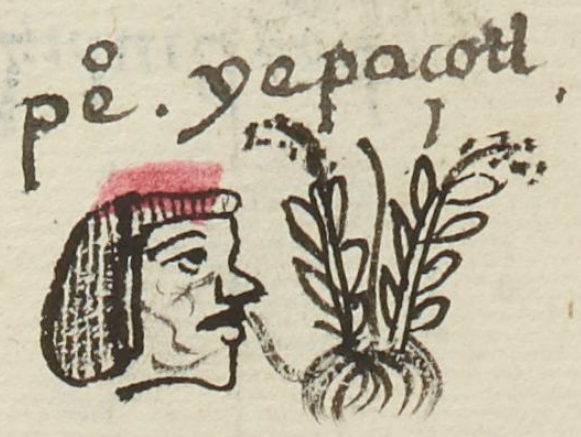Epazotl (MH677r)
This black-line drawing of the simplex glyph for the personal name Epazotl (“Epazote,” which is an herb used in seasoning food) is attested here as a man’s name. The glyph shows three stalks, two of them covered with leaves and flowering at the top. Curving roots are visible below the plant.
Stephanie Wood
The herb's scientific name is Chenopodium ambrosioides. It has a strong smell, which might have a relationship to its name, as the beginning of the word epa- is homophonous with the word for skunk, epatl). The herb is added to foods to flavor them, and it has health benefits, as well. Whether fresh or dried, epazote (as it is called in Mexican Spanish and in English, too) can be added to beans, for instance, and it aids in their digestion. Photos of the herb today show leaves that are long, narrow, and more pointed, but fresh tender starts have leaves something like we see in the glyph here.
Stephanie Wood
1560
Jeff Haskett-Wood
hierbas, condimentos, comida, epazote, nombres de hombres

epazo(tl), an herb or a mint native to Mesoamerica, https://nahuatl.wired-humanities.org/content/epazotl
Epazote
Stephanie Wood
Matrícula de Huexotzinco, folio 677r, World Digital Library, https://www.loc.gov/resource/gdcwdl.wdl_15282/?sp=434&st=image.
This manuscript is hosted by the Library of Congress and the World Digital Library; used here with the Creative Commons, “Attribution-NonCommercial-ShareAlike 3.0 License” (CC-BY-NC-SAq 3.0).



